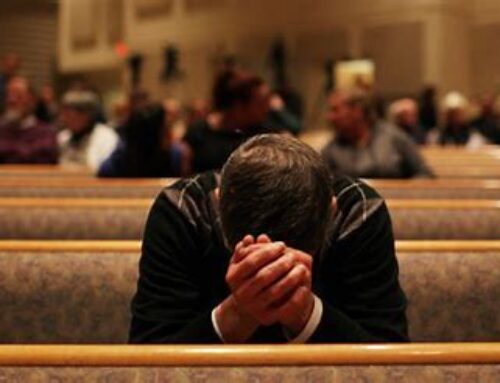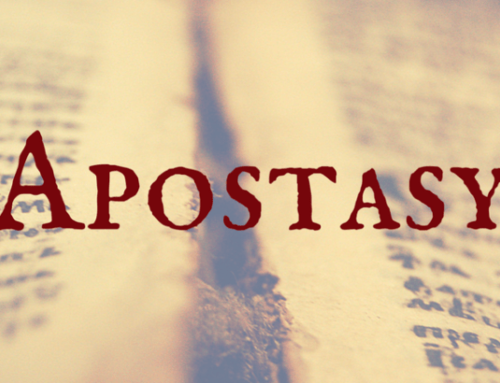World War III Update: Debate erupts over Western military presence on Ukrainian battlefield
April 8, 2024
By BEN WOLFGANG
Reprinted from The Washington Times
Polish and other NATO troops take part in military maneuvers Steadfast Defender 24 in Korzeniewo, Poland, on March 4, as the alliance strengthens its defense capabilities on the eastern flank in the face of Russia’s war on Ukraine. ASSOCIATED PRESS
It has been a red line for President Biden since the U.S. and its NATO allies first rushed to Ukraine’s defense after the Russian invasion of early 2022, but the prohibition on U.S. and Western combat boots on the ground in the war is itself under fresh attack.
Keeping the door open to Western troops in Ukraine, French President Emmanuel Macron explained recently, is an example of the kind of “strategic ambiguity” that could keep the Kremlin guessing and perhaps even pave the way to eventual peace.
But specialists say Mr. Macron likely had a secondary, perhaps equally powerful motivation: To seize the rhetorical high ground from the Biden administration, which has repeatedly throughout the Ukraine-Russia war gone to great lengths to avoid any steps that could be viewed by Moscow as “escalatory.”
In that sense, Mr. Macron may be positioning France as a more forceful leader on the European stage by floating an idea — the placement of actual NATO or European ground forces in Ukraine — that other leading world powers, including the U.S., seem to flatly reject.
“I think it would actually be a positive step,” said John E. Herbst, senior director of the Atlantic Council’s Eurasia Center and former U.S. ambassador to Ukraine, who argued that Western troops in Ukraine might represent a shift in a longrunning dynamic that has seen Russian President Vladimir Putin use the threat of escalation as an effective weapon to keep NATO at bay.
“What Putin has done with some success is to intimidate the West, especially the White House … against taking stronger measures in their own self interest by threatening nuclear escalation,” Mr. Herbst said in an interview.
While he fights to get a $60 billion Ukraine military aid package through an increasingly skeptical Congress, Mr. Biden shows no signs of softening on his self-imposed ban on U.S. forces entering the war.
As recently as last month’s State of the Union address, the president told lawmakers that the Ukrainians themselves “are not asking for American soldiers.”
“In fact, there are no American soldiers at war in Ukraine — and I am determined to keep it that way,” Mr. Biden said.
But just by openly discussing idea, Mr. Herbst said, Mr. Macron has shifted the debate on Ukraine in a serious way.
“It reflects the fact that Macron finally sees Putin as a danger to the West, to France,” Mr. Herbst said. “And Macron loves to tweak the United States and sees weakness in Biden’s policy.”
The Biden administration strongly disputes that its Ukraine policy is weak. Officials stress that the U.S. has led the way in providing weapons and other aid to the Ukrainian military before and during its war with Russia, and they point out that Washington has aggressively targeted the Kremlin with an unprecedented slate of economic sanctions over the past two years.
But the administration has often appeared slow to provide Ukraine with the specific weapons, vehicles, fighter jets and missile systems that it wants, largely out of fear of provoking Russia into escalating the war. Critics say that approach has allowed Russia to often set the terms of the conflict and to seize the initiative from the West.
Putting U.S. or European troops in Ukraine could perhaps seize it back and place Moscow on the defensive.
Against that backdrop, Mr. Macron’s initial comments shook the foreign policy establishment both in the U.S. and Europe, where the idea of sending troops to Ukraine and seemingly inviting a broader war with Mr. Putin’s army had long been viewed as a nonstarter.
At a gathering of European leaders in Paris on Feb. 26, he said the idea should not be unilaterally taken off the table.
“There’s no consensus today to send in an official, endorsed manner troops on the ground. But in terms of dynamics, nothing can be ruled out,” he said in remarks that seemingly caught his European counterparts off guard.
Within hours, top officials in Germany and Poland made clear they aren’t sending troops to Ukraine. The White House followed suit.
“President Biden has been crystal clear since the beginning of this conflict: There will be no U.S. troops on the ground in a combat role there in Ukraine,” White House National Security Council spokesperson John Kirby told reporters a day after Mr. Macron’s suggestion.
Even NATO Secretary-General Jens Stoltenberg pushed back on the suggestion. “NATO allies are providing unprecedented support to Ukraine. We have done that since 2014 and stepped up after the full-scale invasion. But there are no plans for NATO combat troops on the ground in Ukraine,” he told The Associated Press after Mr. Macron’s initial comments.
Russian officials also quickly seized on Mr. Macron’s trial balloon, warning Moscow would respond if Western nations directly joined the fight.
“The very fact of discussing the possibility of sending certain contingents to Ukraine from NATO countries is a very important new element,” Kremlin spokesman Dmitry Peskov told reporters days after Mr. Macron spoke. “In that case, we would need to talk not about the probability, but about the inevitability” of a direct conflict between Russia and NATO.
Both Mr. Kirby’s and Mr. Stoltenberg’s comments referred to “combat” forces, potentially allowing some wiggle room if Western powers eventually want to send more personnel to act in noncombat capacities. Despite some pushback, the French president stood by his position. In an interview with French media on March 14, Mr. Macron said “all these options are possible” when asked about sending troops to Ukraine, and he stressed that “to have peace in Ukraine, we must not be weak.”
“If war was to spread to Europe, it would be Russia’s sole choice and sole responsibility. But for us to decide today to be weak, to decide today that we would not respond, is being defeated already. And I don’t want that,” the French leader said From a purely public relations point of view, specialists say Mr. Macron scored a significant win. “He’s contrasting French vision with American timidity. It’s a good look,” Mr. Herbst said. “And especially to people in Eastern Europe.”
While the White House has seemingly ruled out the idea, some retired U.S. military officials say that sending Western personnel to Ukraine should be considered. Sending combat troops to actually fight against Russian forces on the front lines seems all but impossible, but there are some analysts who argue that NATO nations could send logistical support staff or even help set up and operate an impenetrable air defense system in eastern Ukraine.
“If you could get Americans or Western Europeans, or whoever, running a very tight air-defense system to knock down all those missiles, the [Russian] Kinzals and all the Iskanders that are coming across the [Dnieper] River, if you could do that, that would be very helpful, and it wouldn’t threaten any Russian life,” retired U.S. Army Col. Alexander Crowther said in a recent interview with Radio Free Europe.
“You’d have to be really clear to Putin [and] say, ‘We’re sending people to Ukraine, they’re not going to be doing offensive combat against you. Anything that crosses the Dnieper is dead,’” he said. “It’s not a no-fly zone, it’s air defense.”
RELATED:
World War III Update: Communist China’s Political Warfare Tops Priorities
World War III Update: Jeremiah Prophecy — U.S. will wage war against the Houthis and Iran…and lose
World War III Update: Communist China Is Actively Preparing For War With America
World War III Update: Russia awakes to biggest attack on Russian soil since World War II
World War III Update: Ramadan flare-up could lead to multi-front or even regional war
World War III Update: Macron must be bluffing – or trying to start a new world war
World War III Update: Putin Threatens Nuclear War if NATO Sends Troops
World War III Update: Communist Chinese Nuclear Expansion “Breathtaking”
World War III Update: Why the U.S. is Losing the War to the Houthis
World War III Update: Russian Election Meddling In 26 Countries Since 2020
World War III Update: How Communist China is flooding America with fentanyl on purpose to undermine our society
World War III Update: Top Russian Official Warns of Nuclear Strike Against Washington If Forced to Give Up Territory Won In Ukraine War
World War III Update: If you’re waiting for…
World War III Update: Communist China’s move on Taiwan could come even sooner than projected, U.S. commander warns
World War III Update: Chinese hackers target infrastructure
World War III Update: Communist China, Russia, Iran, and North Korea want to divide and control the world
Why Are Leaders All Over The World Warning That World War III Is Very Close?
World War III is Here and We’re Losing It
World War III Has Begun
Iran: At War With The USA
Biden Administration Not Stopping Iran, Russia, Communist China, the Houthis








Leave a Reply, please --- thank you.